Are you wondering how to use keywords for search engine optimization (SEO)? Do you find yourself at a loss when figuring out where to put keywords in your content? Then you’re at the right place because we’ve dedicated this guide to telling you exactly where you need to use keywords for SEO so Google can rank your pages higher for those keywords.
Before we dive in any further though, let’s get this right off the bat – you need to use keywords in your content. Organic search is responsible for over half of website traffic, 51% to be specific. So it makes sense to conclude that your business is losing out on potential traffic, leads, and sales when you aren’t paying attention to adding keywords in your content. I suggest using a keyword rank tracker to organize your keywords and monitor their performance.
Now that we’re on the same page regarding the importance of keywords for better ranking, let’s talk key placement.
By the end of this guide, we’re hopeful you’ll learn exactly how to use keywords in your content naturally and strategically.
Let’s get started:
Where to use keywords in your content: 7 different places to pop your KWs in
Here’s a handy infographic showing you the exact places you need to add keywords for SEO, followed by a detailed look at why you need include keywords in the places identified:

1. Use keywords in your title tag
Your title tag is the first thing Google looks at when determining what your page covers. It’s also an invite for your readers, which helps them decide whether they’ll find what they’re looking for on your page.
As is common practice, invites are better off when they’re direct, which is why you need to add your keyword to your title tag.
Here are two proven tips for you to correctly use keywords in the title tag:
Use the keyword in the beginning of your title
Although a title is worth a 100 characters, Google truncates the last 35 characters when displaying it.
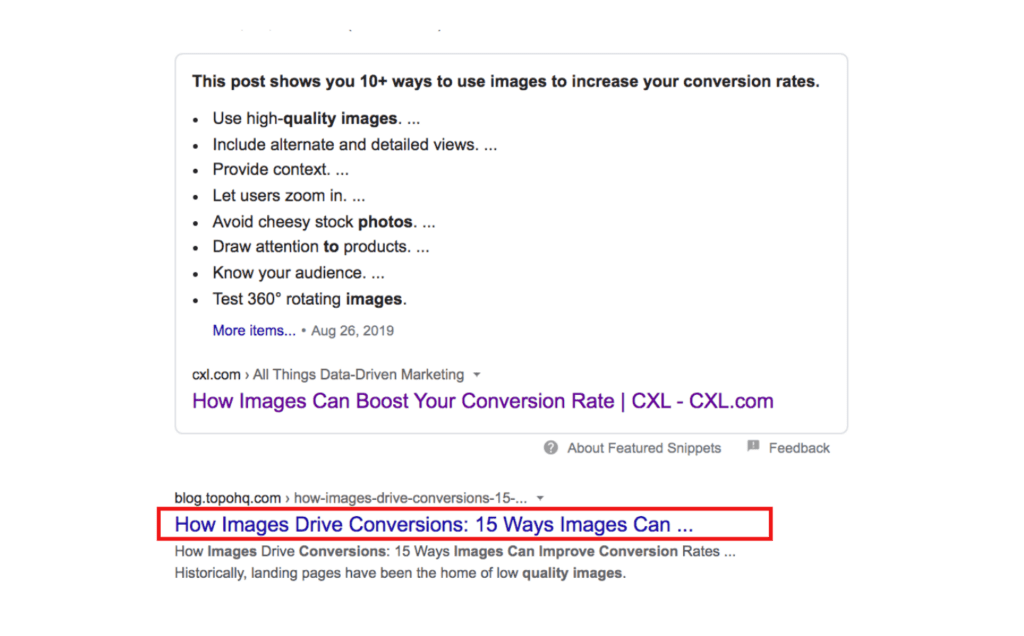
This means you need to add your keywords within the first 65 characters of your title so it shows up in search.
One good way of doing so is using the keyword right away. This is why you’ll find the following headline style common:
Example keyword: Content repurposing
Example title tag: Content Repurposing 101: Your Guide to Reusing Your Content for Maximum Reach
Use the Yoast SEO plugin to differentiate your title tag and headline
You also need to know that there’s a difference between the title tag and headline. The title tag is the title that displays on a search engine results page (SERPs). A headline, on the flip side, is your content’s title, displayed on your web page, and you can make both different using Yoast.
2. Add the SEO keyword in your meta description
The meta description is the small snippet that shows up below your title tag on a search results page.
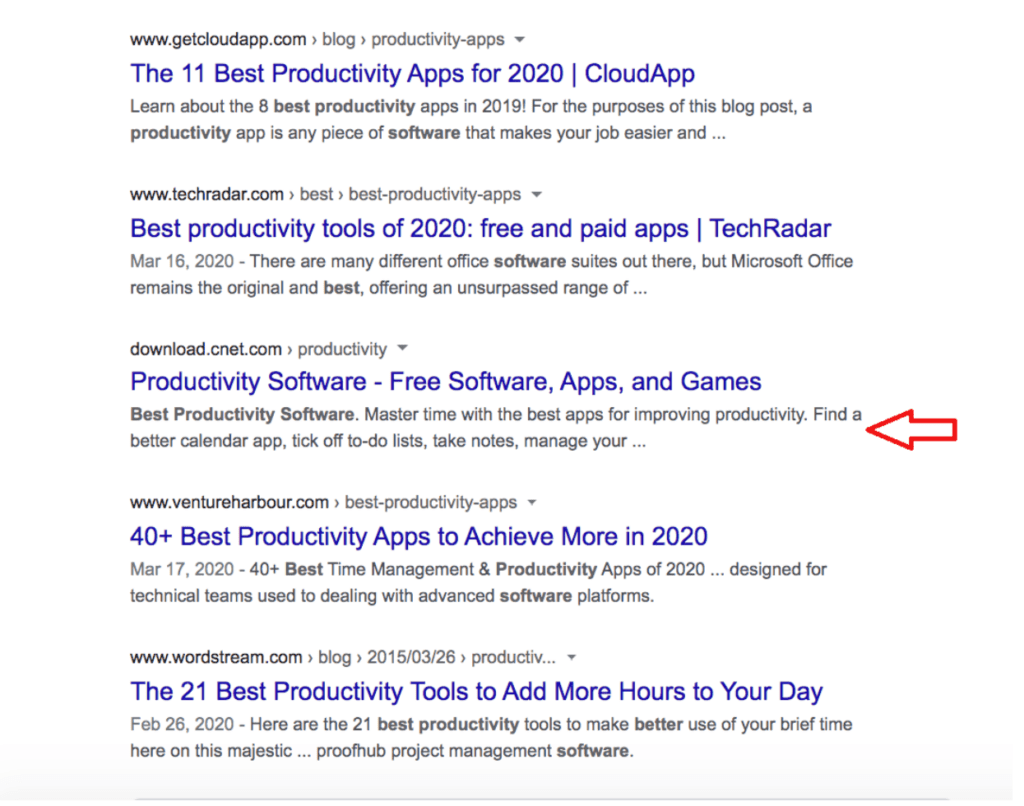
I like to think of it as a couple of enticing words that support the invite (your title tag), encouraging people to read your content. That’s what it technically does too.
Come to think of it – how many times have you found yourself reading the meta description to get a sense of what the content includes? In the example above, the meta descriptions give a quick idea of what’s included, like calendar, noting taking, and to-do lists apps in the piece by CNET.
You’ll find yourself clicking on the result with the meta description that speaks to you the most. This is also the exact reason why you need to add your keyword in the meta description – for the reader – encouraging him to click.
Of course, the more the clicks, the better your chances of ranking.
On a side note, Google does not pay attention to keywords in meta descriptions for ranking purposes. You’ll be adding your keyword here for the humans, not the bots that crawl the content for ranking.
Always keep the following trick in mind when adding keyword in meta description:
- Use keyword in the beginning of your meta description You have between 55-160 characters in a meta description before it’s chopped off by Google like a title tag. Therefore, a keyword toward the start of your meta description is a better idea.
3. Include your keyword in the URL
The URL is another important place Google looks at when figuring out what your page talks about. From a reader’s lens, the URL needs to be simple so it’s easy to recall.
Think of it like this – a visitor enjoys your content, even remembers your site, but not the exact title of your content. He has two options. Either he heads back to your site and does a site search or he remembers your URL and types it in.
Even typing the basics like “Visme how to make an infographic,” for example, can instantly spit out your piece (because how to make an infographic is what’s in the URL)

Makes sense, doesn’t it?
Plus, here are your tips for adding keywords for SEO in your URL:
- Add nothing but the keywords in your URL
- Remove any extra hyphens or punctuation marks so it’s clean and crisp – ideal to remember
Note the difference between an SEO-optimized URL and one that’s not tended to:
❌ Bad URL example:
https://xyz.com/content-marketing-tips-that-will-blow-your-mind-away-in-2020
✔ Good example:
Content Marketing 2020: 7 Tips for Creating Content Your Audience Actually Likes
4. Don’t forget to include keywords to your content headings
Heading tags like the H1, H2, H3, and other tags guide Google regarding what’s on your page.
As for the reader, headings and subheading improve reading experience. How, you ask? One, by dividing the piece into readable blocks of text so readers don’t run into an ugly, I’d-rather-not-read wall of text (remember, you’re writing for the web – not an essay for your English teacher). And, two, by showing readers what’s covered on the page. This way, your reader can scan and tell if your piece is worth reading or not.
Here’s how to play with keyword placement when it comes to headings:
- Add your keywords in the H1 heading You have two options here. Either include your keyword-packed H1 heading straightaway. Note how Fingerprint for Success does that:
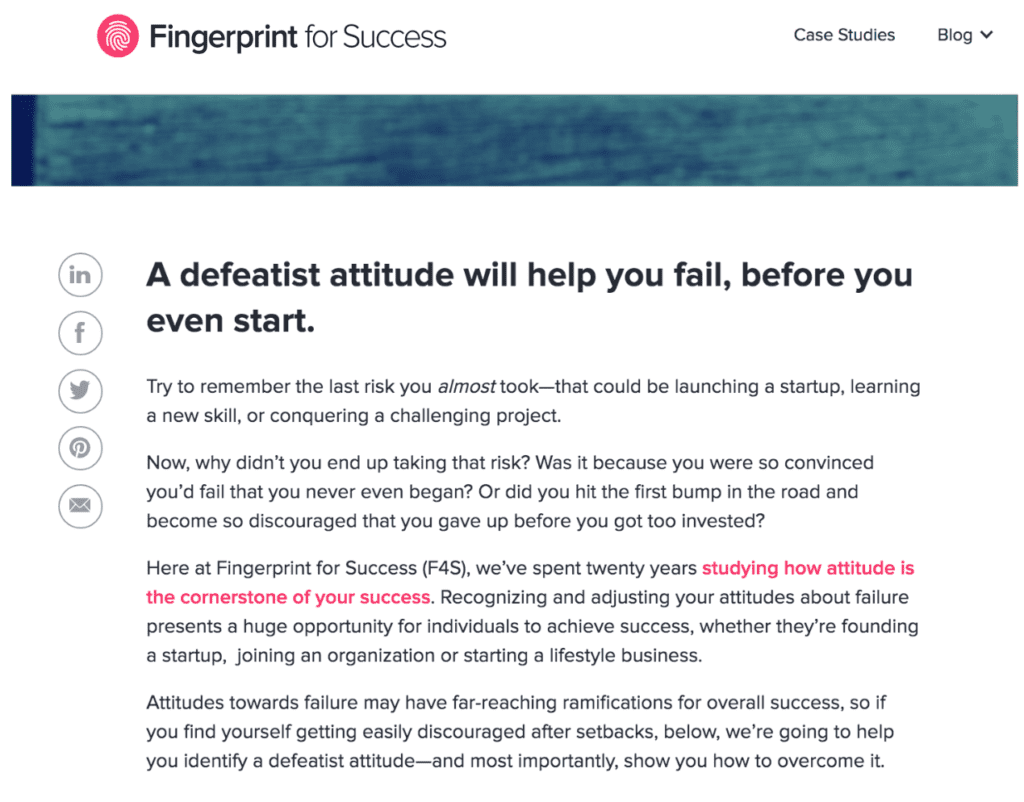
Or, include your H1 after the intro just as G2 Learning Hub here:
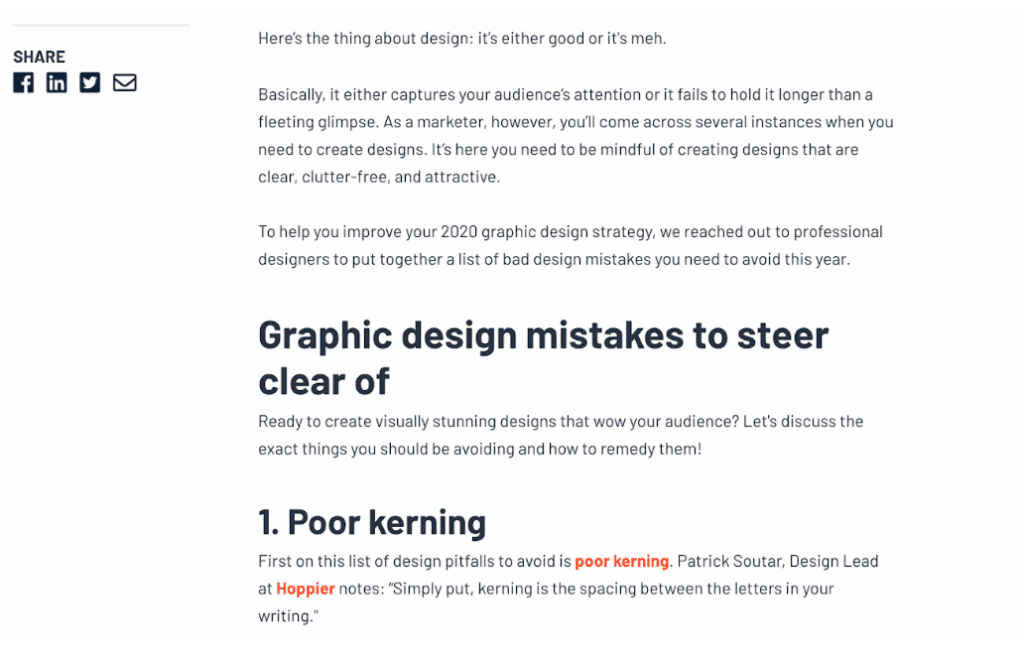
- Keywords in your subheadings H2, H3, and so on This one’s important because keywords in your subheadings can show up in Google’s answer boxes or featured snippets like here:
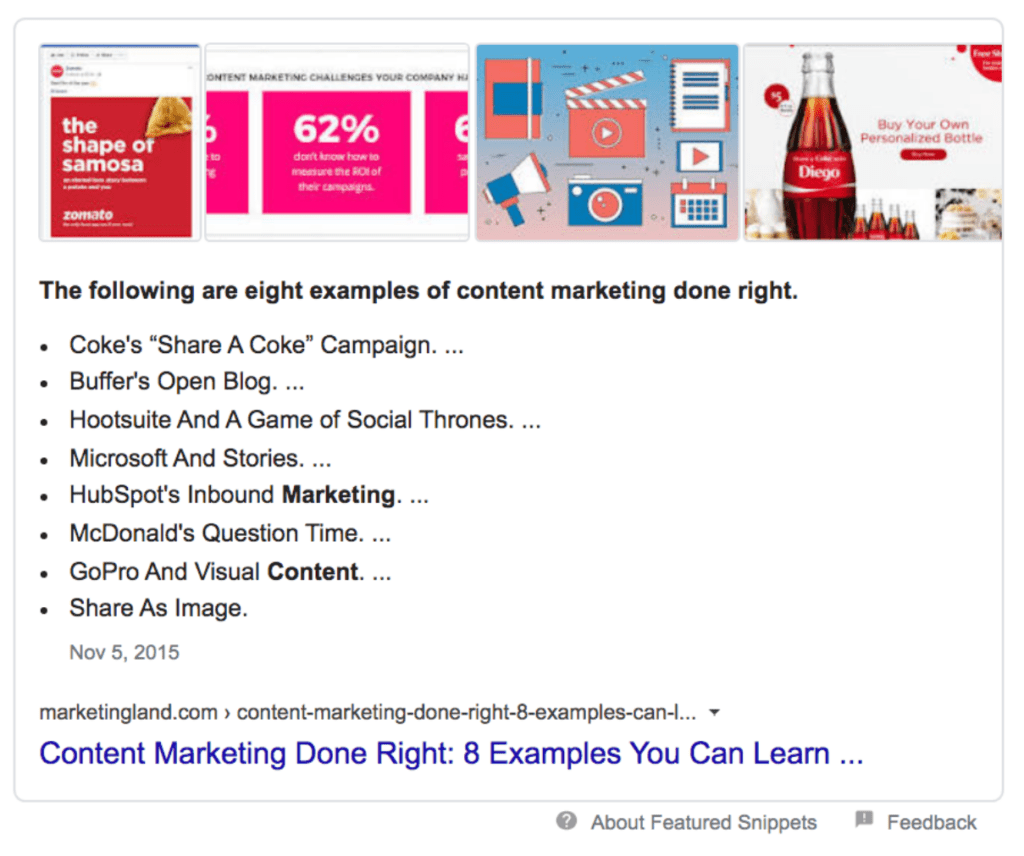
Tip: Make sure you add keywords in your subheadings at least 2-3 times.
5. Sprinkle in keywords throughout the content
But don’t be a douchebag about it. Meaning: use them naturally + subtly. Here’s where your keywords will go:
- First paragraph This requires you to be creative to get the keyword in the first line. If not, keep it to the first paragraph.
- Throughout your content It’s best to use keyword variations and long-tail keywords here. One quick way to find these is to conduct a quick Google search and see what results show in the search box:

Also look at the related searches and use them as your keywords variations. Find these at the bottom of the SERP:
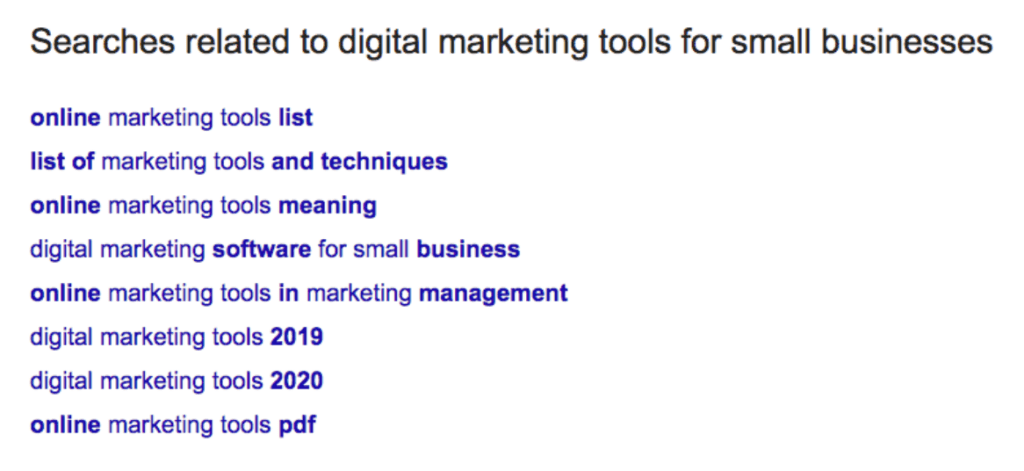
- Last paragraph Bonus points for slipping your keywords in your last subheading too.
Tip: Don’t be spammy and overstuff keywords. Remember you’re writing mostly for humans while ensuring the bots see your page too.
6. Include keywords with images too
Google indexes images. So when a reader clicks on the ‘images’ search option, he finds all the images with the keywords. Naturally, this makes your content more findable.
Here’s an example: My featured image for ‘email writing tips’ is ranking among Google’s images, but not in the SERPs. 😀 See the difference using keywords in your images can make?
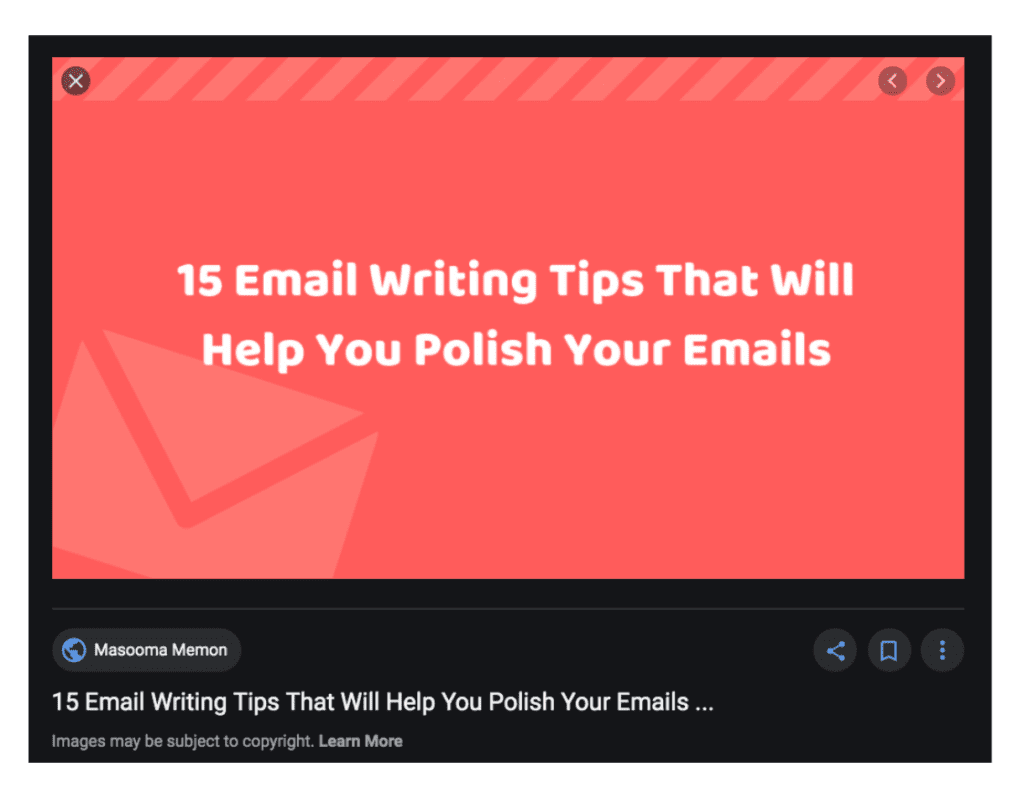
You have two places to work your keywords with images:
- Image file name This helps you get your images indexed on Google. A handy way to go about doing this is naming your image files and screenshots with the keyword or its variations as you save them.
- Alt text Keywords in alt text play another important role – they make your content accessible. Wait, what? Yep. Alt text are small tags that pop up when you hover your mouse over an image. This is, particularly, helpful for those with visual impairments. Alt text is also great for making content readable for those who block images.
Tip: Don’t use the main keyword only. Use variations and synonyms so people and search engines can better understand what your image talks about.
7. Last on how to use keywords: add them to links
Links? Yes, you heard that right. This applies to both incoming and outgoing links.
Let’s elaborate. Incoming links are links that come to your site. Of course, you have little control over these. But, when you’re consciously building links, say using any of the off-page SEO tactics like guest posting, you can have a say.
In that case, request the site linking to you to use your keyword phrase to link to your page. The keyword-packed text used here is the anchor text and it’s an important signal Google uses to determine what a web page covers. Don’t forget to make sure the linked page talks about the keyword. Otherwise, you’d be linking to the wrong page – misleading readers. That’s a big no-no.
On the other hand, outgoing links are links that go from your page to another one of your pages. Hence, when you’re internally linking content (just as I did above with off-page SEO tactics), make sure you use the right keyword too.
But here’s an important tip: always vary the keyword text linking to you. Using the same text for every internal link sends the wrong signal to Google, which can get you penalized.
How to use keywords for SEO: Best practices
The truth is – an important difference between good content and poor content is that the former uses keywords as naturally as possible. Poor content, on the flip side, adds a chock-full of keywords in the content and throws it to their reader. How well do you think a reader will receive it? Pretty bad, if you ask me.
So here’s what you need to do:
- Always use keywords natural and subtly. This way your readers learn your content is answering their questions and isn’t written to please the search engine solely.
- Write for humans. Ultimately, Google appreciates and rewards in ranking the content that its users click, spend most time on, and link to. So if your post doesn’t satisfy them, it won’t be long before your ranking tanks. Or, like Wendy Piersall says, “Google only loves you when everyone else loves you first.”
- Stick with using keyword variations, synonyms, and long-tail keywords. These are different versions of your primary keyword. Using them comes with a serious advantage – you don’t sound repetitive and unnatural with your keyword usage.
Go on and use keywords in your content
So what are you waiting for? Now that you know where it’s best to use keywords in your content, you’re in a better place to create content that ranks. Remember, keywords go into your title tag, meta description, URL, headings, and images. Slip them into the rest of the content and add keywords to anchor texts too.
